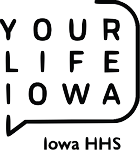 You've heard of naloxone, sometimes called the brand name NARCAN, to reverse an opioid overdose. But are you wondering how to use naloxone as an officer or sheriff? With our naloxone toolkit, you can learn how to get free naloxone nasal spray as well as free naloxone training for your law enforcement agency.
You've heard of naloxone, sometimes called the brand name NARCAN, to reverse an opioid overdose. But are you wondering how to use naloxone as an officer or sheriff? With our naloxone toolkit, you can learn how to get free naloxone nasal spray as well as free naloxone training for your law enforcement agency.
Download a free naloxone toolkit
The nation - and Iowa - has an overdose epidemic
- Accidental injuries, including fatal overdoses, are the leading cause of deaths for Americans ages 1-44.1
- 107,000 overdose deaths were recorded from December 2020 to December 2021.1
- 83% of opioid-related deaths in Iowa in 2022 were due to synthetic drugs (like fentanyl) largely due to these synthetic opioids containing the illicit, unregulated drug supply.2
It's so important that first responders carry naloxone with them and know how to give the medication. As a law enforcement agency, you can receive free naloxone nasal spray by completing the Naloxone Request Form for Law Enforcement Agencies. For help with naloxone training, contact your local substance use prevention agency
Download the free "Community Opioid Overdose Reversal Medications (OORMs) Planning Toolkit" from the Substance Abuse and Mental Health Services Administration for "actionable guidance for community leaders, public health professionals, and other partners to create effective overdose prevention and response strategies to improve local overdose reduction outcomes."
What is naloxone?
- Naloxone is an FDA-approved drug that saves lives.
- It works quickly reversing the effects of opioid overdose and restoring breathing.
- It is available as a nasal spray (sometimes called NARCAN) or a liquid, injectable form.
- Naloxone is easy and safe to use.
- It can't be misused, even if someone doesn't have opioids in their system.
Naloxone and compassion can help combat the overdose epidemic.
Substance use disorder is a treatable disease, but part of the reason people don’t reach out for help is fear of being judged. By showing those with substance use disorders compassion and understanding, you can help them get the treatment and support they need. And by carrying naloxone, you can be prepared to save lives. Learn more about naloxone and how you can help prevent fatal opioid overdoses with our free Naloxone Toolkit.
Frequently asked questions
- Does naloxone enable drug use?
- No. Research has shown the use of naloxone contributes to decreased opioid use and overdose deaths.3,4
- Can naloxone reverse opioid overdoses?
- Yes. Naloxone is effective at reversing opioid overdoses for common opioids like hydrocodone, oxycodone, morphine and heroin, along with strong, synthetic opioids like fentanyl or carfentanil.5
- Does accidently inhaling or touching small amounts of potent opioids, like fentanyl, cause overdose?6
- Very unlikely. Despite the significant increase in exposure to fentanyl and other opioids, evidence of seizures and reports of overdose symptoms experienced by law enforcement have been extremely rare. However, appropriate care must be adhered to when handling these substances. If you come into contact with opioids, avoid contact with your mouth or nose until you can wash your hands with soap and water. Delaying overdose intervention due to concerns about exposure means a person experiencing an overdose could die. Don’t wait, administer naloxone.
- Why do I keep responding to the same people overdosing?
- When people with substance use disorders don’t have access to treatment and recovery support, substance use disorder can be hard to manage – which can lead to multiple overdoses. Saving a life with naloxone can be the first step to helping someone get the support they need.
- Why should we develop a naloxone policy for our agency?
- According to the Bureau of Justice Assistance, National Training and Technical Assistance Center, “Individual officers have cited improved job satisfaction rooted in an improved ability to ‘do something’ at the scene of an overdose. Law enforcement agencies that have implemented an overdose-reversal program report improved community relations, leading to better intelligence-gathering capabilities.” Learn how to develop naloxone standard operating procedures for your agency with our free Naloxone Toolkit.
Sources:
1. Centers for Disease Control and Prevention
2. Iowa Department of Public Health’s Bureau of Health Statistics
3. Jones, J. D., et al. “No Evidence of Compensatory Drug Use Risk Behavior among Heroin Users after Receiving Take-Home Naloxone.” Addictive Behaviors, vol. 71, 2017, pp. 104–106. 2.
4. Wagner, K. D., et al. “Evaluation of an Overdose Prevention and Response Training Programme for Injection Drug Users in the Skid Row Area of Los Angeles, CA.” International Journal of Drug Policy, vol. 21, no. 3, 2010, pp. 186–193.
5. Substance Abuse and Mental Health Services Administration. “Opioid Overdose Prevention and Response Toolkit.” https://store.samhsa.gov/product/overdose-prevention-response-toolkit/pep23-03-00-001
6. American College of Medical Toxicology (ACMT) & American Academy of Clinical Toxicology (AACT). Position Statement: Preventing Occupational Fentanyl and Fentanyl Analog Exposure to Emergency Responders. Accessed September 19, 2017. http://www.acmt.net/_Library/Fentanyl_Position/Fentanyl_PPE_Emergency_Responders_.pdf
Want to find help on your own?
Your Life Iowa is always here to help you find resources near you. However, we understand that sometimes you’d like to look for help on your own. Our map will let you do just that.
Would you like a substance use professional to contact you?
Fill out a simple contact form and a professional will reach out to you.
Are you, friends or family with someone who uses opioids?
Find out how Your Life Iowa can provide support for them -- and you.
